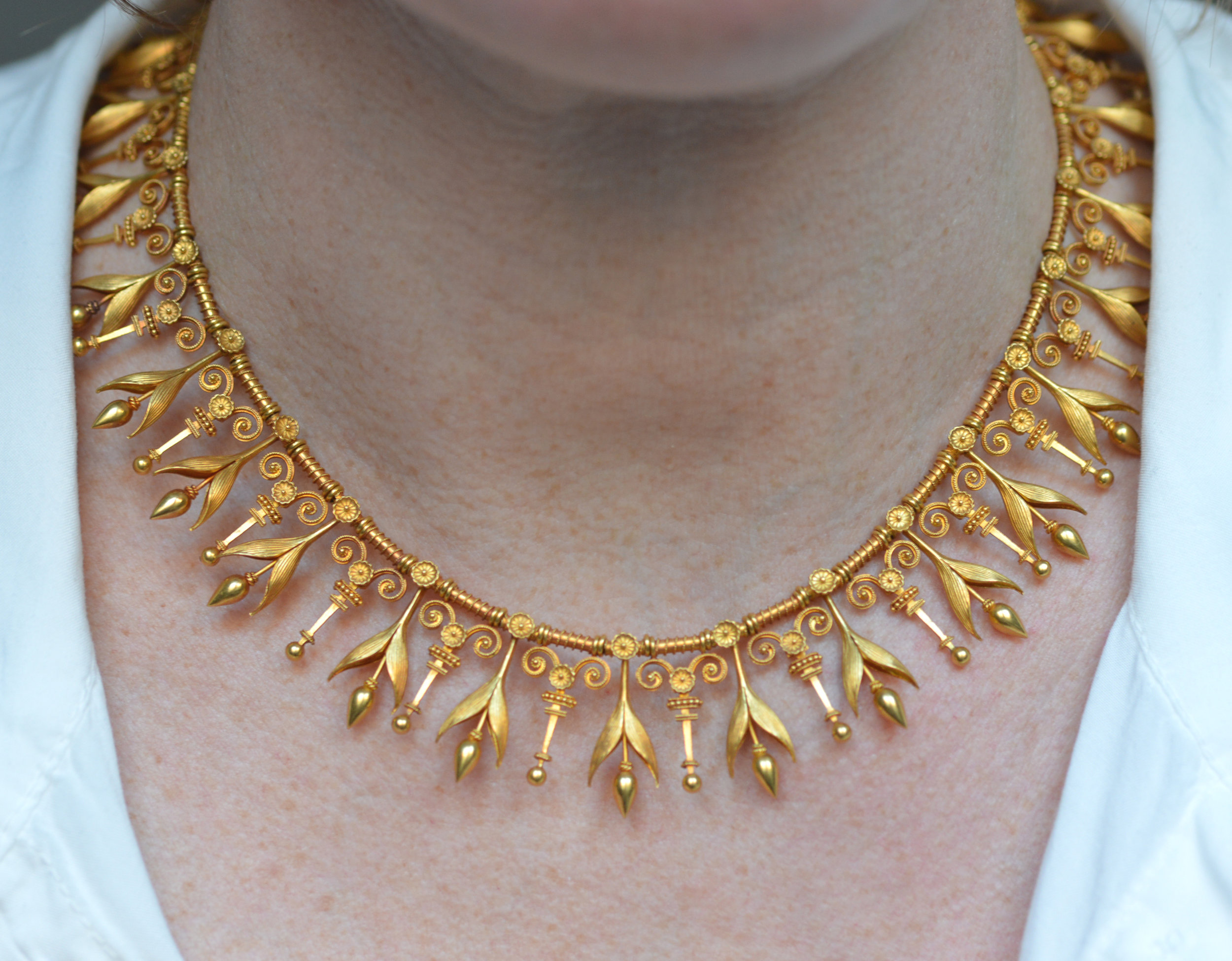





Archaeological revival gold fringe necklace by Eugène Fontenay, Paris circa 1865.
In excellent condition, complete with the original Fontenay case, the lid inscribed with the initials I.R.
French gold poinçon, partial maker’s mark
39.5cm (15 1/2”) long
SOLD
Throughout the 19th century fashions in jewellery were often inspired by earlier ages. Renaissance and Middle-ages designs were “revived” in the earlier half of the century, then in the 1860’s Greek and Etruscan classicism came to the fore.
Eugène Fontenay was fascinated by the collection of ancient jewellery formerly belonging to Cavalier Campana and purchased by Napoleon III at auction. An exhibition of the collection was due to open in the Louvre in 1862 so he fervently studied these and others available from private collections. Avoiding simple imitation, he produced his own range of jewels of the highest quality and composition that continue to marvel to this day. He is by far the best revivalist French jeweller, and examples of his work can be found in the world’s major collections as well as jewellery books such as “French Jewellery of the Niineteenth Century” by Henri Vever (on numerous pages but an example of this necklace is illustrated on p.639 of the English re-print)
Archaeological revival gold fringe necklace by Eugène Fontenay, Paris circa 1865.
In excellent condition, complete with the original Fontenay case, the lid inscribed with the initials I.R.
French gold poinçon, partial maker’s mark
39.5cm (15 1/2”) long
SOLD
Throughout the 19th century fashions in jewellery were often inspired by earlier ages. Renaissance and Middle-ages designs were “revived” in the earlier half of the century, then in the 1860’s Greek and Etruscan classicism came to the fore.
Eugène Fontenay was fascinated by the collection of ancient jewellery formerly belonging to Cavalier Campana and purchased by Napoleon III at auction. An exhibition of the collection was due to open in the Louvre in 1862 so he fervently studied these and others available from private collections. Avoiding simple imitation, he produced his own range of jewels of the highest quality and composition that continue to marvel to this day. He is by far the best revivalist French jeweller, and examples of his work can be found in the world’s major collections as well as jewellery books such as “French Jewellery of the Niineteenth Century” by Henri Vever (on numerous pages but an example of this necklace is illustrated on p.639 of the English re-print)
Fontenay necklace